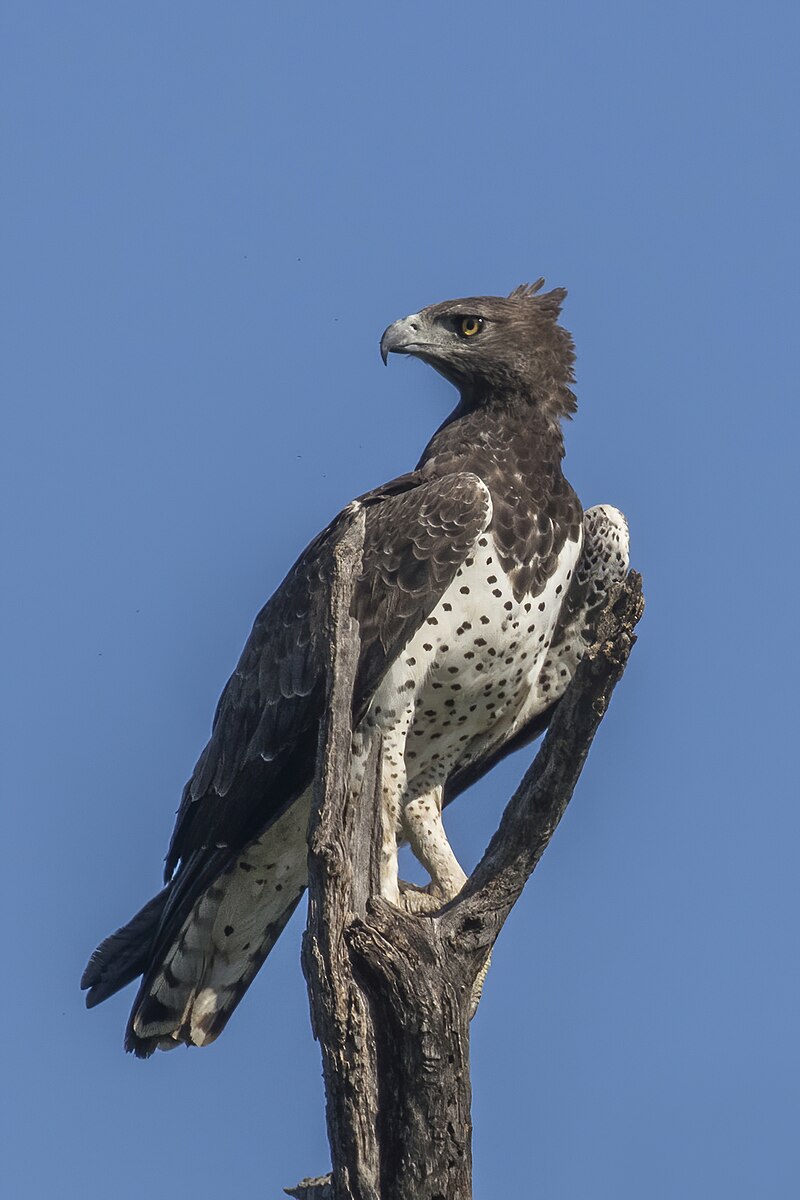Martial eagles, one of the largest and most powerful birds of prey in Africa, typically lay one egg at a time, although occasionally they may lay two eggs. However, only one nestling usually survives, as the stronger chick often kills its sibling, a phenomenon known as siblicide. The female incubates the egg for 45 to 50 days, and the chick takes around 90 to 100 days to fledge.
The Nesting Habits of Martial Eagles
Martial eagles are known for their impressive size and strength, with a wingspan that can reach up to 2.4 meters (7.9 feet). These majestic birds are found throughout sub-Saharan Africa, where they primarily hunt small to medium-sized mammals, birds, and reptiles.
When it comes to their nesting habits, martial eagles are quite particular. They typically build their nests high up in tall trees or on rocky cliffs, using a variety of materials such as sticks, branches, and even animal fur. The nest itself can be quite large, measuring up to 2 meters (6.6 feet) in diameter and 1 meter (3.3 feet) in depth.
How Many Eggs Do Martial Eagles Lay at a Time?
 Image source: Martial eagle by Charles J. Sharp
Image source: Martial eagle by Charles J. Sharp
As mentioned earlier, martial eagles typically lay one egg at a time, although they may occasionally lay two eggs. This is a relatively low clutch size compared to some other raptor species, which can lay up to three or four eggs.
The reason for this is that martial eagles are highly territorial and invest a significant amount of time and energy into raising their young. They need to ensure that their single chick has the best possible chance of survival, as the species faces various threats such as habitat loss, hunting, and poisoning.
The Incubation and Hatching Process
Once the egg is laid, the female martial eagle will begin the incubation process, which typically lasts between 45 and 50 days. During this time, the female will sit on the egg, keeping it warm and protected, while the male brings her food.
After the egg hatches, the chick is initially quite weak and feeble, becoming more active only after around 20 days. The parents continue to care for the chick, providing it with food and protection, for a further 6 to 12 months after it fledges, or becomes able to fly.
Siblicide and Survival Rates
As mentioned earlier, it is not uncommon for the stronger chick to kill its sibling in a phenomenon known as siblicide. This is a survival strategy that ensures the stronger chick has the best chance of reaching adulthood and passing on its genes.
The survival rate for martial eagle chicks is relatively low, with only around 50% of chicks making it to adulthood. This is due to a variety of factors, including predation, starvation, and disease.
The Importance of Martial Eagles in the Ecosystem
Martial eagles play a crucial role in the ecosystems they inhabit, serving as apex predators and helping to maintain a balance in the food chain. They are particularly important in controlling populations of small to medium-sized mammals, such as hares, mongooses, and even young baboons.
However, the martial eagle is currently classified as “Vulnerable” on the IUCN Red List of Threatened Species, with populations declining due to a variety of threats, including habitat loss, hunting, and poisoning. Conservation efforts are underway to protect these magnificent birds and ensure their continued survival.
Conclusion
In conclusion, martial eagles are fascinating birds of prey that lay one or occasionally two eggs at a time. The incubation and hatching process is a delicate and complex affair, with the stronger chick often killing its sibling in a process known as siblicide. Despite the challenges they face, martial eagles play a vital role in the ecosystems they inhabit, and their conservation is of utmost importance.
References:
– https://www.sanbi.org/animal-of-the-week/35981/
– https://animaldiversity.org/accounts/Polemaetus_bellicosus/
– https://animalia.bio/martial-eagle
– https://peregrinefund.org/explore-raptors-species/eagles/martial-eagle

